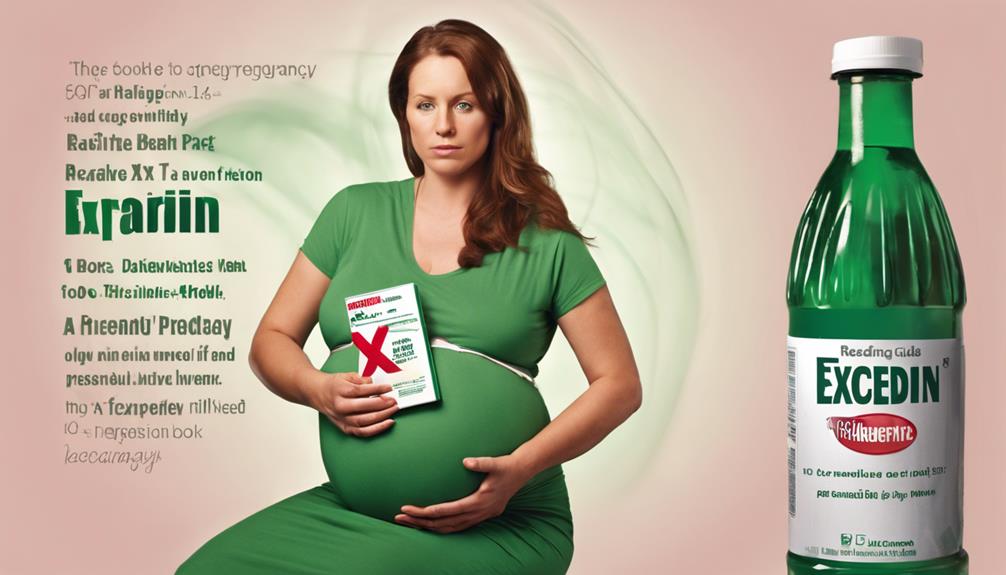Ensuring that consuming crab during the initial stages of pregnancy remains both safe and enjoyable can pose a challenge. It is crucial to strike a balance between satisfying cravings and meeting nutritional needs, and understanding how to incorporate this delectable seafood into your diet is key.
From the source to the plate, our guide navigates the waters of safe crab consumption, offering insights that might just surprise you.
So, are you ready to start on a journey that could transform your culinary experience during this important period?
Key Takeaways
- Cook crab thoroughly to reduce foodborne illness risks.
- Choose reputable sources for fully cooked crab.
- Consume crab 2-3 times weekly, up to 12 ounces.
- Prioritize safety and moderation for a healthy pregnancy diet.
Safety Precautions for Eating Crab
Ensuring thorough cooking of crab is paramount to minimize the risk of foodborne illnesses during pregnancy. When pregnant, it's important to be cautious about the seafood we eat.
Raw seafood, including crab, can harbor harmful bacteria and parasites. To guarantee it's safe to eat crab during pregnancy, always opt for fully cooked crab meat. Additionally, checking the source and quality of the crab is essential to avoid contaminants that could potentially harm the developing fetus.
It's recommended to limit crab intake to 2-3 times per week, not exceeding 12 ounces weekly, as advised for pregnant individuals due to concerns about mercury levels. Following proper food safety guidelines when handling and preparing crab is crucial to prevent any potential risks during pregnancy.
Consulting with a healthcare provider can provide personalized advice on the safety precautions for consuming crab, especially during the first trimester. Your healthcare provider can offer guidance tailored to your specific health needs and pregnancy concerns.
Benefits of Consuming Crab

How can consuming crab benefit pregnant individuals during the first trimester?
Crab, a type of fish, offers a plethora of advantages for expectant mothers. Initially, its high protein content is important for supporting fetal growth and development in the early stages of pregnancy.
Additionally, crab is rich in omega-3 fatty acids, promoting ideal brain and eye development in the growing fetus. The presence of vitamin B12 in crab meat plays a crucial role in nerve function and DNA synthesis, contributing to the overall health of the baby.
Furthermore, selenium, another essential nutrient found in crab, helps protect cells from damage and boosts the immune system, which is particularly important during pregnancy. Including crab in your diet during the first trimester guarantees a diverse intake of nutrients, aiding in a well-rounded and balanced prenatal diet for the benefit of both the mother and the developing baby.
Choosing and Preparing Crab Safely
To prioritize the safety of both the mother and the developing baby during the first trimester of pregnancy, it's important to carefully select and cook fresh crab from reputable sources.
When choosing crab, pregnant women should opt for fully cooked options to avoid potential foodborne illnesses. It's essential to inspect the crab for any signs of spoilage, like a strong fishy odor or slimy texture, before preparation.
Raw or undercooked crab dishes, such as crab sushi or crab salads, should be avoided to reduce the risk of bacterial contamination.
By following proper food safety practices when handling and cooking crab, pregnant women can minimize any health risks associated with consumption during the first trimester.
Crab Consumption Frequency Guidelines

Moderate crab consumption, up to 2-3 times per week, is deemed important for pregnant women during the first trimester, with a recommended weekly limit of 12 ounces to maintain a balanced diet and minimize potential risks. This frequency allows for the enjoyment of crab's nutritional value while staying within advised boundaries.
By following these guidelines, pregnant individuals can benefit from the essential nutrients in crab without exceeding the suggested limits. It's key to practice moderation to guarantee a healthy and well-rounded diet during early pregnancy. Consulting with a healthcare provider can provide personalized recommendations based on individual circumstances and health needs.
These guidelines aim to support pregnant women in making informed choices about their crab consumption, promoting both their well-being and that of their developing baby. Remember, staying within the recommended limits is key to enjoying crab safely during the first trimester.
Expert Recommendations for Crab Intake
Healthcare providers recommend pregnant individuals in their first trimester limit their crab intake to 2-3 times per week to guarantee a safe and balanced diet. It's important to opt for fully cooked crab to reduce the risk of foodborne illnesses, especially during early pregnancy.
This low-mercury seafood option offers essential nutrients like protein and minerals, making it a favorable choice for expectant mothers. Consuming up to 12 ounces of cooked crab per week is deemed safe during the first trimester, providing a healthy source of sustenance. Seeking personalized advice from a healthcare provider regarding crab consumption in the first trimester is highly advisable.
Conclusion
To sum up, incorporating fully cooked and low-mercury crab into a balanced prenatal diet during the first trimester can provide essential nutrients and health benefits.
By following safety precautions, choosing and preparing crab safely, and consulting with healthcare providers, pregnant individuals can enjoy the delicious taste of crab while minimizing risks.
Remember, moderation is key to reaping the nutritional advantages of seafood like crab during pregnancy.
Stay informed, stay safe, and enjoy your meals responsibly.










